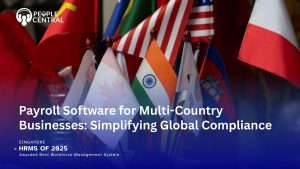Singapore’s Transformative Workplace Journey
Singapore, a city-state renowned for its economic prowess and forward-thinking policies, has been at the forefront of a significant workplace revolution. This transformation is driven by a confluence of factors, including technological advancements, changing demographics, and a growing emphasis on work-life balance. These elements have collectively reshaped employee expectations, leading to a new paradigm of work.
Singapore Work Revolution: Technological Advancements, the Catalyst for Change
The advent of digital technologies has been a pivotal force in the Singapore Work Revolution. Cloud computing, artificial intelligence, and automation have not only streamlined processes but have also fundamentally altered the nature of work itself. For instance, AI-powered tools are automating routine tasks, freeing up employees to focus on more strategic and creative endeavors.
Moreover, the rise of remote work has been accelerated by technological advancements. Tools such as video conferencing and project management software have made it possible for employees to collaborate effectively from anywhere, blurring the lines between traditional office spaces and remote work environments. This shift has led to a growing demand for flexible work arrangements, allowing employees to strike a better balance between their professional and personal lives.
Singapore Work Revolution: A New Workforce Dynamic
Singapore’s demographics have also played a significant role in shaping the Work Revolution. The country’s aging population and declining birth rate have created a shortage of workers, forcing employers to rethink their talent acquisition and retention strategies. This has led to a greater emphasis on accommodating the needs of older workers and creating inclusive workplaces that value diversity.
Furthermore, the increasing diversity of Singapore’s workforce has brought about a cultural shift. Employees from various backgrounds are demanding workplaces that embrace their unique perspectives and experiences. This has necessitated a focus on cultural sensitivity, diversity and inclusion initiatives, and fostering a sense of belonging.
Singapore Work Revolution: Work-Life Balance, a Priority for Employees
One of the most notable changes in employee expectations is a heightened emphasis on work-life balance. Gone are the days when employees were expected to prioritize their careers over their personal lives. In addition, the Ministry Of Manpower Singapore has released a Tripartite advisory on workplace mental health and well-being. Employers are responding to this trend by offering flexible work arrangements, such as remote work, flexible hours, and compressed workweeks. These initiatives not only improve employee satisfaction but also contribute to increased productivity and reduced turnover. Additionally, companies are investing in employee wellness programs, providing access to mental health resources, and promoting a healthy work environment.
Must Read: Workplace Mental Health Gets A Boost
Singapore Work Revolution: The Rise of Purpose-Driven Work
Beyond financial rewards and career advancement, employees are increasingly seeking work that is meaningful and aligned with their values. They want to feel that their work contributes to something larger than themselves and makes a positive impact on society. This shift has led to a growing demand for purpose-driven organizations that prioritize social and environmental responsibility.
Companies that can articulate their mission and values clearly and demonstrate their commitment to making a difference are more likely to attract and retain top talent. By creating a sense of purpose and belonging, organizations can foster a more engaged and motivated workforce.
The Future of Work: A Hybrid Approach
As the Singapore Work Revolution continues to unfold, it is becoming increasingly clear that a hybrid approach to work will likely become the norm. This means that employees will combine elements of remote work with in-person collaboration, depending on the nature of their work and their individual preferences.
To successfully navigate this hybrid future, employers will need to invest in technology that supports remote work, create clear policies and guidelines for hybrid work arrangements, and prioritize employee well-being. Additionally, they will need to foster a culture of trust, flexibility, and collaboration to ensure that employees feel valued and supported.
Conclusion
The Singapore Work Revolution is a testament to the country’s ability to adapt and innovate in response to changing circumstances. By embracing technological advancements, addressing demographic shifts, and prioritizing work-life balance, Singapore has created a new paradigm of work that is more employee-centric and aligned with the needs of the modern workforce.
As the future of work continues to evolve, it is essential for organizations to stay ahead of the curve and anticipate the changing expectations of their employees. By investing in their people, fostering a positive work culture, and embracing a hybrid approach to work, companies can position themselves for long-term success in the competitive global marketplace.








 5
5


























